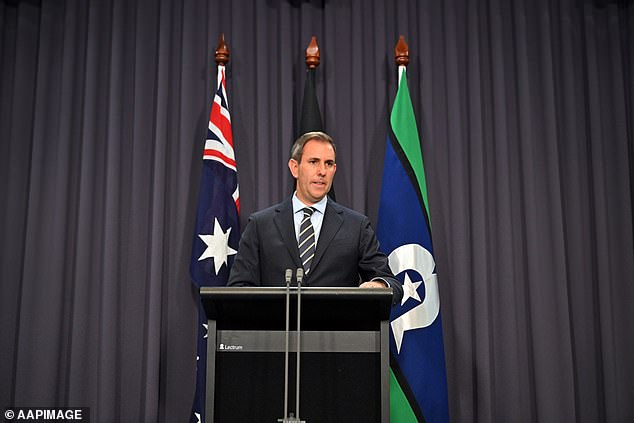Why hybrid cars are about to get a whole lot more expensive for millions of Aussies
Popular large hybrid cars will be hit with a new 'luxury' tax, following the Albanian government's pledge to tighten pollution controls and boost sales of fully electric vehicles.
The 33 percent luxury car tax applies to hybrid vehicles costing more than $76,950, including family favorites like the Toyota Kluger and Mazda CX60.
Treasurer Jim Chalmers revealed the luxury car tax would tighten the definition of fuel-efficient cars.
He explained in the Mid Year Economic and Fiscal Outlook (MYEFO), published earlier in December, that the pollution threshold would be halved.
Previously, vehicles that consumed more than seven liters of fuel per 100 km were subject to the tax.
Australians looking to buy a hybrid car will face a 33 percent tax on every dollar spent over $76,950
The change means that vehicles that use more than 3.5 liters of fuel per 100 km will be taxed at a rate of 33 cents for every dollar of retail price over $76,950.
The MYEFO explained that the update would “encourage greater adoption of fuel-efficient vehicles.”
“These changes will encourage greater adoption of fuel-efficient vehicles, in line with the Australian Government's National Electric Vehicle Strategy,” the outlook said.
A government spokesperson explained that the definition of fuel economy has not changed since 2008, despite “huge” changing technology and the greater availability of hybrid and electric vehicles.
“The government is modernizing the definition to reflect modern standards of efficiency,” the spokesperson said Sydney Morning Herald.
The MYEFO also claimed that the change in the luxury car tax law supported the government's pledge to reduce greenhouse gas emissions by 43 percent by 2030 and achieve net zero by 2050.
The move is being dismissed as a revenue boost, with the change to the luxury car tax expected to raise $155 million over the next two years once it comes into effect from July 1, 2025.
Under the luxury car tax change, buyers of hybrid vehicles will be hit with a 33 percent tax rate on every dollar sold over $76,950.
Meanwhile, the tax threshold for vehicles defined as fuel-efficient is set at $89,332.
The changes would mean a motorist wanting to buy the Mazda CX-60 hybrid – which retails for $85,500 – would have to pay an extra $8,550 because the sticker price is above the $76,950 threshold and the car exceeds the fuel economy limit.
This means buyers will get an additional $2,800 more than the retail price, despite it being a hybrid vehicle.
An $87,500 base model Lexus RX could cost an extra $3,480, while a Toyota Kluger, which retails for $80,000, could cost an extra $1,000.
Those eyeing the Mazda CX-90, which has a retail price of $93,655, could spend an extra $5,500 due to the change in luxury car taxes.

Treasurer Jim Chalmers (pictured) explained during the Mid Year Economic and Fiscal Outlook that the change to the luxury car tax would tighten the definition of fuel-efficient vehicles.
The change is designed to actively penalize Australians looking to purchase a hybrid vehicle.
Hybrid cars, which have both a combustion engine and a battery for an electric motor, typically cost less than a fully electric vehicle.
Electric Vehicle Council Chief Executive Behyad Jafari said technology has “advanced rapidly” in the past decade since the luxury tax policy was last updated.
Mr Jafari added that the move was overdue and would encourage rather than hinder the introduction of zero-emission vehicles.
“What this change shows is that smart governments can adjust their policy settings to absorb short-term revenue impacts, without prematurely turning to blunt instruments like an EV tax,” says Jafari.
“Smart reform means looking across the board and taking steps to encourage, rather than hinder, the uptake of electric vehicles.”
